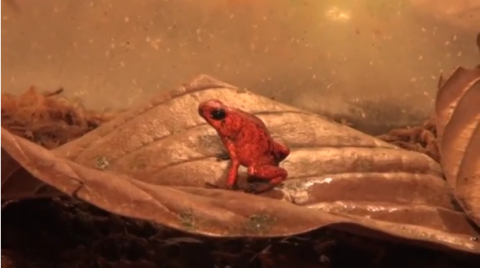
QUITO, Ecuador (Reuters) — Scientists from Ecuador have bred the Jambato frog, or Quito stubfoot toad, which was rediscovered in April 2016, after 28 years of being thought extinct.
In 2016, scientists recovered 43 Jambato (Atelopus ignescens) frogs.
A couple of the species recently managed to reproduce, laying 500 eggs at the Jambatu Center for Amphibian Conservation, pioneers in amphibian research for more than 20 years.
Ecuador’s Environment Minister Tarsicio Granizo said protecting amphibians would give researchers who study diseases an insight into organ growth and development.
Granizo added another threatened species, the Harlequin frog (Atelopus nanay), at the Amaru Biopark, had also reproduced successfully.
Herpetologist Luis Coloma, who directs the Jambatu Center, called the discovery, a “milestone for the scientific world.”
Coloma said that when the Jambato frog disappeared in 1988, it was a tragedy, after they were abundant in cities like Quito and in National Parks such as Cotopaxi.
He called the reproduction a “miracle.”
According to an official news release, the Jambatu Center – located in San Rafael, one of the valleys near Quito – has laboratories equipped with the latest technology.
It has a Life Bank, which houses about 36 percent of skins, molecules, germplasm and other biotic elements, belonging to 186 species of threatened amphibians.
The Amphibian Conservation and Sustainable Use of Genetic Resources Project is an initiative of Ecuador’s Environment Ministry, which receives technical assistance from the United Nations Development Program and is funded by the Global Environment Facility (GEF).
The technical and scientific partners are the Jambatu Center for Amphibian Research and Conservation, the Ikiam Regional University and the Amaru Biopark.
Ecuador is home to three times more species per square-kilometer than Colombia and 21 times more than Brazil.
Destruction of habitat, pollution, introduced species, emerging pathogens, climate change, among others, are the main threats to these species.
Academic research and the development of conservation practices are the most important actions for the protection of biodiversity, as well as the development of new technologies.








